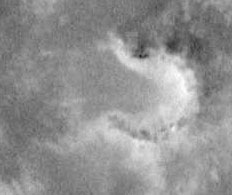
Source: 10409
Comment: Remain of crater rim where one part was grown up by evaporites and the other washed away by water?
| 2.1 - 1 |
|
 |
Class: e Source: 10409 Comment: Remain of crater rim where one part was grown up by evaporites and the other washed away by water? |
| 2.1 - 1a |
|
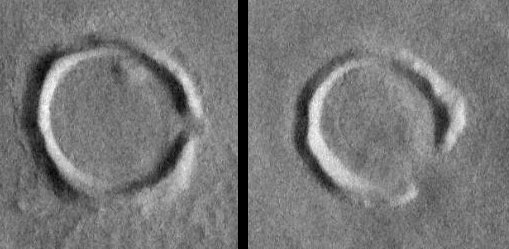 |
Class: u Source: sp239703 Comment: The breakouts in the rim indicate considerable water outflow. If the water did not enter the crater by rain a subsurface source is the main possiblity. |
| 2.1 - 2 |
|
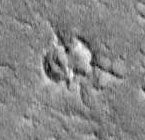 |
Class: er Source: 3604 Comment: evaporite ridges trigered by impact crater? |
| 2.1 - 3 |
|
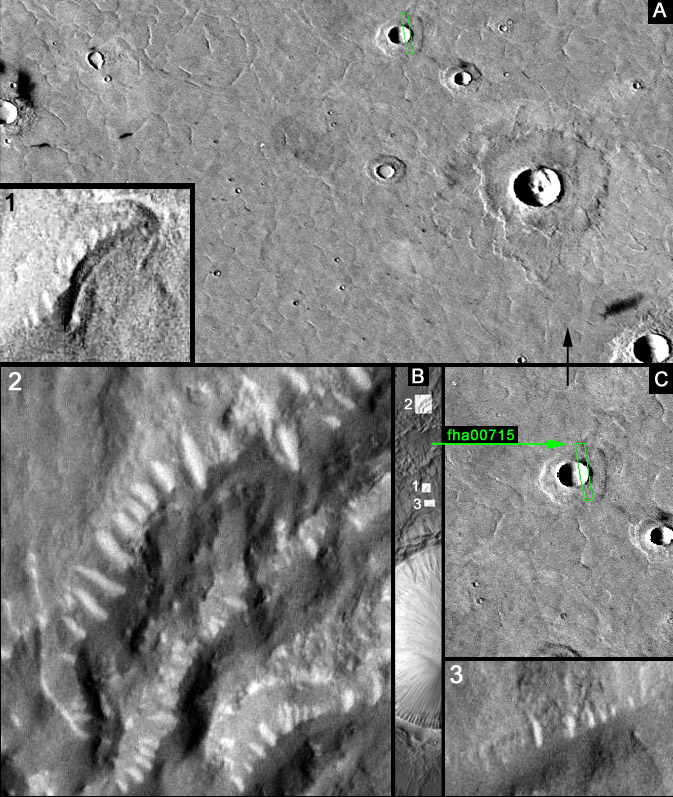 |
Class: e Source: fha00715 Comment: In B we see the image fha00715, in C its location, and in A its regional surroundings. The inserts 1, 2 and 3 are original size sections of fha00715 located at B. In 1 we see a small evaporite ridge (1.5 m/pixel) created by slope downflow from upper right to lower left. There seems to be an older similar ridge originating from the upper picture side to the left and right. The source of both could be small crater pits. The dark ridge shows a ramification in the lower half. The lower albedo of the flow area supports the assumption that it is of younger age than the area to the upper left. There we see bright stripes. This could be the evaporite remains of local flow from the upper to the lower part of the picture. The younger dark evaporite buries this older structure more and more. In its lower end the ridge itself shows part of bright evaporite. In 2 and 3 we see such burying of bright stripes by darker areas several times. It supports the notion that the whole area we see around the big impact crater is created by evaporites only. The Viking context image C shows the area in discussion to be a typical "fluidized ejecta" feature of the "pancake crater" type. Here its origin due to the impact event is challenged. Probably the impact created a circular fracture area where water could much better reach the surface. The "pancake ejecta" were then created by accumulation of evaporite. This interpretation is supported by MGS MOLA data were even a large 24 km crater had pancake ejecta only 10s of meters heigh.
Further the above context image A shows several large dark streak like areas, a possible hint at considerable amounts of subsurface water.
|
| 2.1 - 4 |
|
 |
Class: er Source: fha01026 Comment: evaporite ridge did not much penetrate in crater, no ridge at center. Indicates water source is at distinct level and not too deep. |
| 2.1 - 5 |
|
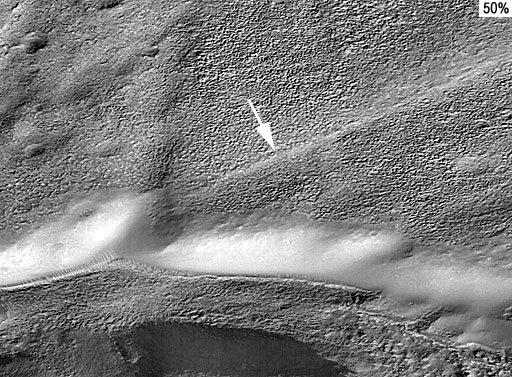 |
Class: e Source: fha01084 Comment: Evaporite accumulation at thin layers slowly covering landscape. Here no crater but a ridge seems to be the origin. The dark, uniform area below could have been created by different salt or just a more recent outflow still darkened by a chemical reaction with the soil. |
| 2.1 - 6 |
|
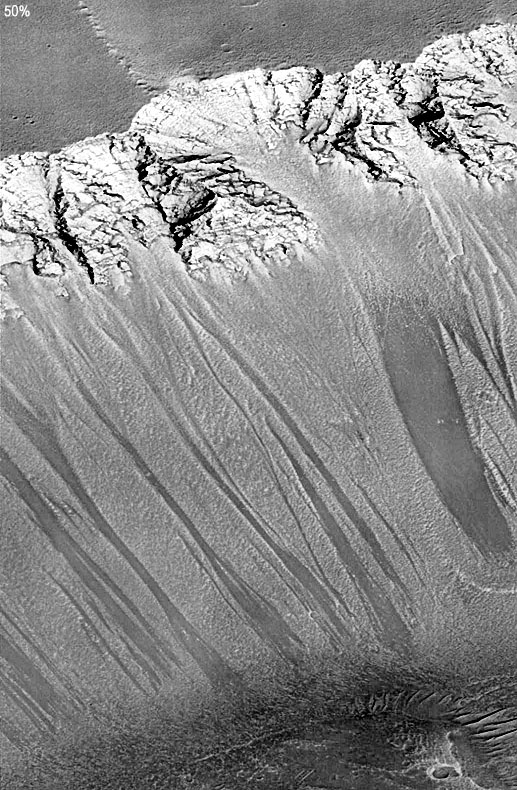 |
Class: e s Source: fha01087 Comment: Erosion paths carved out of a Noctis Labyrinthus north-facing cliff. The darker color could indicate they are just old black streaks. Some originated from the chaotic rock where small black areas are visible. This could be water sources where (at the moment of low activity) evaporation prevents sustained water flow. On the left side below the rock, two tubes close by are visible, perhaps created by evaporation of small sustained salty water flow. |
| 2.1 - 7 |
|
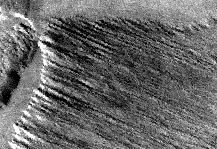 |
Class: er s X Source: fha01362_gr Comment: Viking context image shows flow erosion features related to diffuse black streaks. This area of interest was not imaged by MOC. |
| 2.1 - 8 |
|
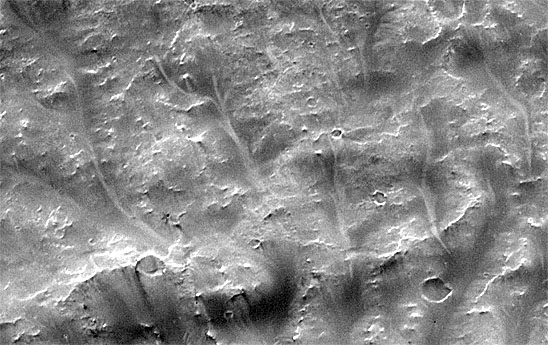 |
Class: er X Source: SP124504 Comment: White and black flow features but topography rather unknown. |
| 2.1 - 9 |
|
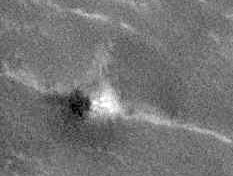 |
Class: e Source: sp242003 Comment: Evaporite pyramid grown out from a cliff |
| 2.1 - 10 |
|
 |
Class: er Source: sp247105 Comment: A ridge actively crossing a crater |
| 2.1 - 11 |
|
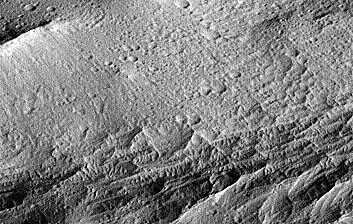 |
Class: er Source: sp253705 Comment: Network of ridges perhaps created by evaporites |